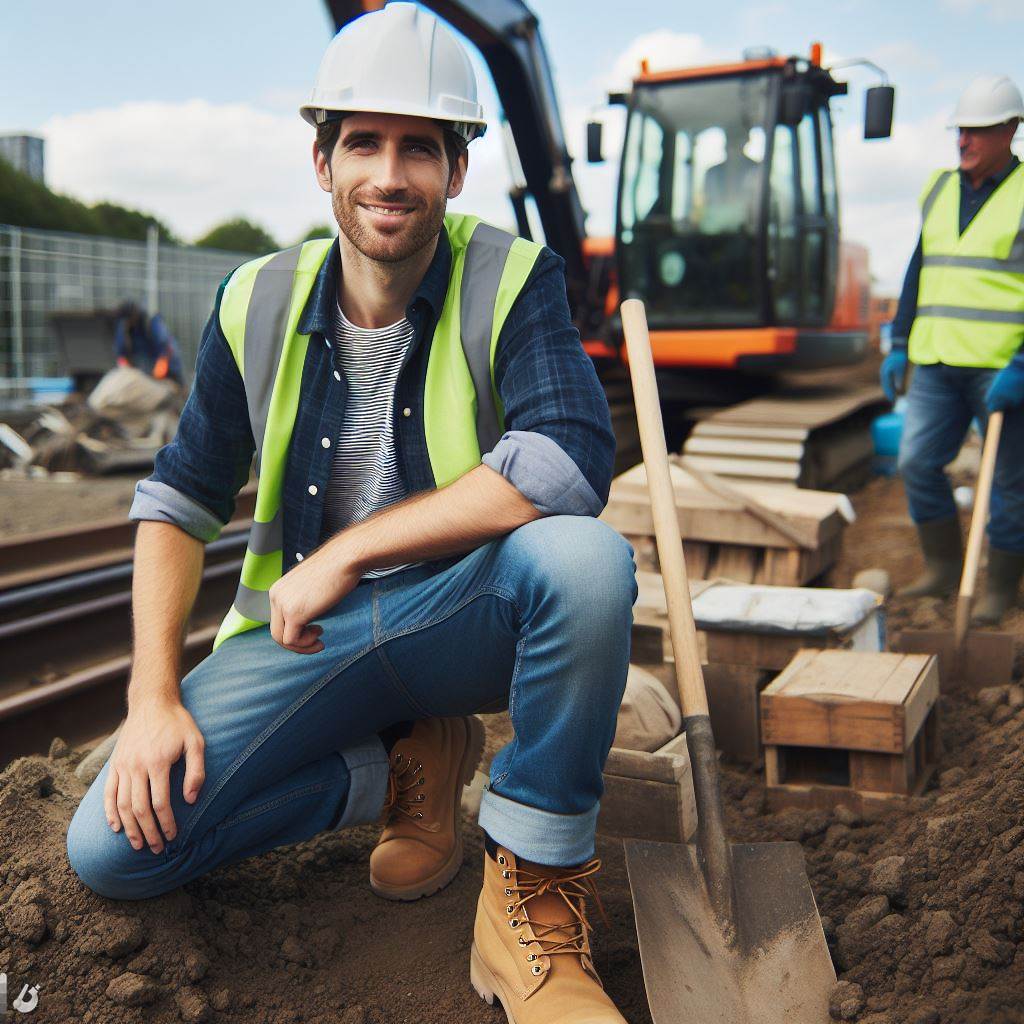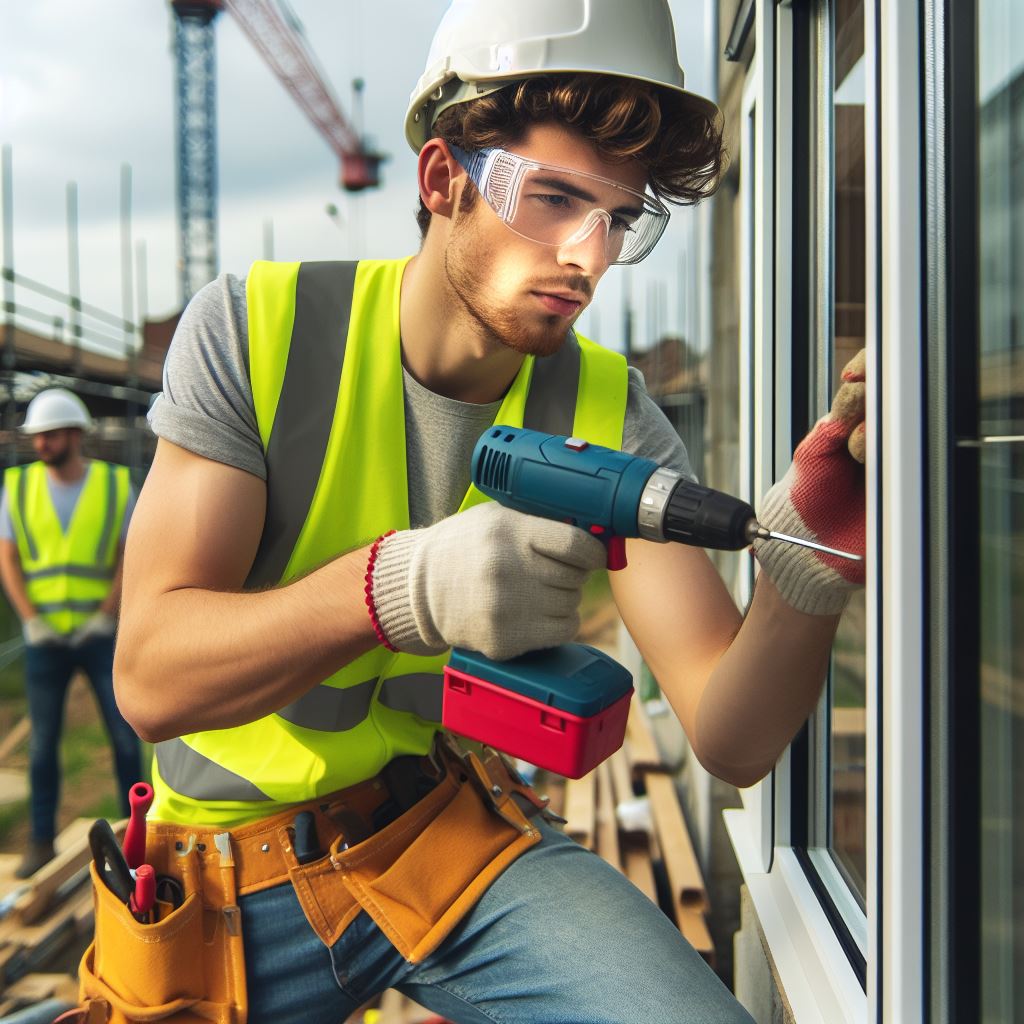Introduction
In the dynamic world of construction, health and safety stand as paramount considerations. Builders in the UK recognize the critical importance of prioritizing and upholding rigorous health and safety standards.
The construction industry is inherently risky, with potential hazards ranging from heavy machinery operation to working at heights.
Prioritizing health and safety is not just a legal obligation; it is a moral imperative for builders.
Builders play a pivotal role in creating structures that shape communities, and ensuring the well-being of the workforce is integral to this process.
The introduction sets the stage for understanding why health and safety are non-negotiable aspects for builders in the UK.
As we delve into the multifaceted dimensions of health and safety practices, it becomes evident that builders bear the responsibility of fostering a secure working environment.
Beyond legal compliance, this commitment safeguards the lives and livelihoods of those contributing to the construction landscape.
This section will explore the proactive measures, training protocols, and technological advancements that empower UK builders to mitigate risks effectively.
From site-specific precautions to overarching safety culture, the emphasis on health and safety pervades every aspect of construction endeavors.
Ultimately, this section unfolds the narrative of how health and safety, as a top priority, not only protects individuals but also elevates the overall quality and sustainability of construction practices in the United Kingdom.
Regulatory Framework for Health and Safety in the UK
The legal framework that governs health and safety in the UK
The legal framework governing health and safety in the UK consists of several key acts and regulations.
These include the Health and Safety at Work etc. Act 1974, which is the primary legislation, and various regulations that provide more specific guidelines.
The aim of these regulations is to ensure the health, safety, and welfare of workers, as well as anyone else who may be affected by work activities.
The role of Health and Safety Executive (HSE) in enforcing regulations
The Health and Safety Executive (HSE) plays a crucial role in enforcing health and safety regulations in the UK.
As the national regulatory body, the HSE is responsible for securing compliance with the law and prosecuting those who violate health and safety standards.
Personalized UK Career Consulting
Receive tailored career guidance designed just for you. Get actionable steps and expert support to boost your career in 1-3 days. Take control of your career now.
Get StartedThey conduct inspections, provide guidance, and promote awareness to improve workplace health and safety across all industries.
The Construction (Design and Management) Regulations (CDM) and its relevance
The Construction (Design and Management) Regulations (CDM) govern the construction industry, emphasizing safe project management from inception.
CDM prioritizes planning, coordination, and cooperation, ensuring all parties actively manage health and safety throughout projects.
Designers, contractors, and clients, as duty holders, must adhere to CDM regulations, managing health and safety at all stages.
The UK’s legal framework, supported by the Health and Safety Executive, mandates robust health and safety standards in various industries.
The Health and Safety at Work etc. Act 1974 forms the cornerstone, placing duties on employers for employee health and safety.
Employers must conduct risk assessments, implement control measures, and provide training and supervision to ensure worker safety.
Employees have a duty to cooperate and follow procedures, preventing risks to themselves and others.
The HSE monitors compliance through inspections, improvement notices, and legal action, aiming to minimize accidents and ill-health.
Within construction, CDM regulations play a pivotal role, fostering collaboration and shared responsibility for health and safety.
Designers, contractors, and clients collaborate to identify hazards, plan activities, and ensure coordination throughout projects.
Implementation of CDM regulations in construction reduces accidents, improves outcomes, and prioritizes worker well-being, aligning with UK standards.
In essence, the UK’s comprehensive legal framework, overseen by the HSE, mandates active health and safety management in construction.
Read: Day in the Life of a UK-Based Welder
Your Dream Job Starts with a Perfect CV
Get a tailored CV and cover letter that captures your unique strengths and stands out in your industry. Let us help you make an unforgettable first impression.
Get StartedHealth and Safety Culture in the Construction Industry
The growing emphasis on health and safety in the UK construction sector
- The UK construction sector is increasingly prioritizing health and safety.
- There is a growing recognition of the importance of ensuring safe working conditions.
- Builders and contractors are placing greater emphasis on preventing accidents and reducing risks.
- Regulatory bodies have implemented stricter regulations to enforce health and safety standards.
The changing attitudes towards health and safety in the industry
- Historically, health and safety were often overlooked in the construction industry.
- However, there has been a significant shift in attitudes towards prioritizing worker safety.
- Builders and employers now understand the long-term benefits of a safe working environment.
- Increased awareness about the physical and mental health impact of accidents has contributed to this change.
The efforts made by various stakeholders to promote a positive safety culture
- The UK government has implemented campaigns to raise awareness and promote a positive safety culture.
- Health and safety training programs have become mandatory for workers in the construction industry.
- Stakeholders, including trade unions, have actively advocated for better working conditions and safety measures.
- Building companies have started prioritizing health and safety by investing in appropriate equipment and technology.
- Regular safety audits and inspections are conducted to identify and address potential hazards.
- The industry has embraced the concept of a “safety first” approach to prevent accidents and protect workers.
- Collaboration between employers, employees, and regulatory bodies has improved communication and implementation of safety measures.
- Safety protocols and guidelines are constantly updated to meet evolving industry standards and best practices.
- Sharing success stories of organizations that have prioritized health and safety has inspired others to follow suit.
Overall, the construction industry in the UK is witnessing a significant shift towards prioritizing health and safety.
There is a growing recognition of the importance of creating a positive safety culture in order to protect workers and prevent accidents.
Efforts from various stakeholders, including the government, trade unions, and building companies, have played a crucial role in driving this change.
With stricter regulations, mandatory training programs, and increased awareness, the industry is moving towards a future where a safe working environment is the top priority.
Continuous collaboration and improvement will ensure that health and safety remain at the forefront of the UK construction sector.
Read: UK Welding Laws and Regulations: A Guide
Safety Measures and Protocols in Construction Sites
Common Safety Measures Implemented on Construction Sites
- Personal Protective Equipment (PPE) must be worn at all times to prevent injuries.
- All workers undergo site inductions and receive proper training on safety protocols.
- Risk assessments and method statements are conducted to identify and address potential hazards.
Importance of Regular Safety Inspections and Audits
Safety inspections and audits are vital in ensuring a safe working environment by:
- Identifying any safety hazards or violations that may exist on construction sites.
- Ensuring compliance with safety regulations and standards.
- Promoting continuous improvement and prevention of accidents or injuries.
Role of Site Supervisors and Safety Officers in Maintaining Safety Standards
Site supervisors and safety officers play a crucial role in maintaining safety standards by:
- Overseeing and enforcing safety measures and protocols on construction sites.
- Conducting regular inspections and audits to identify areas of improvement and ensure compliance.
- Providing training and guidance to workers on proper safety practices.
- Investigating accidents or incidents and implementing corrective actions to prevent future occurrences.
- Creating a safety culture and fostering a mindset of prioritizing health and well-being.
By actively engaging in safety measures and protocols, construction sites can promote a safe working environment for all workers involved.
Read: The Role of Welders in UK Construction

Key Challenges and Solutions for UK Builders
The potential challenges faced by builders in maintaining health and safety standards
- Time constraints and project deadlines.
- Balancing safety with productivity.
- Addressing worker complacency and resistance.
The steps taken by UK builders to address these challenges
- Implementing strict safety protocols.
- Increasing workforce training and awareness.
- Utilizing technology for safety management.
Builders in the UK face various challenges when it comes to maintaining health and safety standards. These challenges, however, can be effectively addressed through the implementation of key solutions.
The potential challenges faced by builders in maintaining health and safety standards
- Time constraints and project deadlines: Builders often work within tight schedules and deadlines, making it challenging to allocate enough time for proper health and safety measures.
- Balancing safety with productivity: There is a constant need to find the right balance between maintaining a safe working environment and ensuring productivity levels remain high.
- Addressing worker complacency and resistance: Some workers may become complacent or resistant to following safety protocols, posing a risk to themselves and others on the construction site.
These challenges can have serious implications for the health and safety of workers, as well as the overall success of construction projects. It is crucial for UK builders to address these challenges proactively.
The steps taken by UK builders to address these challenges
- Implementing strict safety protocols: Builders are increasingly implementing strict safety protocols and regulations to ensure that all workers adhere to the necessary safety measures.
- Increasing workforce training and awareness: Builders have recognized the importance of providing comprehensive training and awareness programs to educate workers about potential risks and safety procedures.
- Utilizing technology for safety management: Technology plays a significant role in improving safety management on construction sites. Builders are adopting tools such as wearables, drones, and IoT devices to monitor and enhance safety measures.
By implementing these solutions, UK builders can effectively mitigate the challenges associated with maintaining health and safety standards.
Essentially, it is crucial for builders in the UK to prioritize health and safety in their projects.
Optimize Your LinkedIn for Success
Boost your LinkedIn profile with a professional bio, keyword-rich headline, and strategic recommendations that attract recruiters. Stand out from the crowd and get noticed.
Optimize NowDespite the challenges they face, such as time constraints, balancing safety with productivity, and addressing worker complacency, there are viable solutions available.
Strict safety protocols, increased training and awareness, and the use of cutting-edge technology all contribute to creating a safer working environment for builders.
Emphasizing health and safety not only protects the well-being of construction workers but also maintains the reputation and success of the UK construction industry.
Read: Welding Certifications: Your UK Guide
Consequences of Neglecting Health and Safety
The potential consequences of disregarding health and safety in the construction industry
- Increased accident rates and fatalities
- Legal implications and financial penalties
Case studies or examples of incidents that resulted from neglecting safety precautions
Neglecting health and safety in the construction industry can have severe consequences, both for workers and companies involved.
It is crucial to prioritize safety to avoid unnecessary accidents, legal troubles, and financial burdens.
Increased accident rates and fatalities
When health and safety measures are neglected, the risk of accidents significantly rises.
Without proper precautions and protocols, construction sites become hazardous environments where accidents are more likely to occur.
Workers may be exposed to dangerous substances, fall from heights, or be injured by machinery.
These accidents can lead to severe injuries and even fatalities. The physical toll on workers is immense, with long-term consequences for their health and well-being.
It also negatively impacts their families and communities, causing emotional and financial distress.
Legal implications and financial penalties
Failure to prioritize health and safety can result in legal implications for construction companies. Government regulations often require employers to ensure a safe working environment for their employees.
Neglecting these responsibilities can lead to legal actions, investigations, and potential litigation.
Companies found guilty of disregarding health and safety regulations may face substantial financial penalties.
They can also be held accountable for any harm caused to workers or third parties due to negligence. These penalties can be crippling for businesses, leading to financial instability and reputational damage.
By neglecting health and safety, construction companies not only risk legal consequences, but they also harm their reputation within the industry.
Clients and investors are more likely to choose companies that prioritize worker safety, resulting in potential loss of contracts and business opportunities.
Case studies or examples of incidents that resulted from neglecting safety precautions
- Grenfell Tower fire (2017): This tragic incident in London claimed the lives of 72 people and injured many more.
The fire quickly spread due to cladding materials that did not meet safety standards, highlighting the importance of proper fire safety measures. - Hatfield rail crash (2000): A high-speed train derailed near Hatfield, England, causing the death of four people and injuring many others.
The accident was caused by a cracked rail, which could have been detected and prevented with more diligent safety inspections. - Piper Alpha disaster (1988): In one of the deadliest offshore oil and gas accidents, 167 workers lost their lives when a fire broke out on the Piper Alpha platform.
The incident was the result of inadequate maintenance and safety procedures.
These examples demonstrate the devastating consequences of neglecting health and safety in the construction industry.
They serve as reminders of the importance of consistently prioritizing safety to prevent accidents and protect lives.
Basically, neglecting health and safety in the construction industry can have severe consequences.
Increased accident rates and fatalities put workers’ lives at risk, while legal implications and financial penalties can cripple companies.
By highlighting case studies and incidents resulting from neglecting safety precautions, it becomes evident that prioritizing health and safety is not only a moral obligation but also a vital aspect of running a responsible and successful construction business.
Conclusion
Recap of Health and Safety Importance
Ensuring health and safety in the UK construction sector is paramount. Builders play a pivotal role in maintaining a secure work environment.
Positive Impact of Safety-Focused Approach
Prioritizing safety yields positive results. Reduced accidents, improved worker well-being, and increased project efficiency showcase the benefits of a safety-focused approach.
Encouragement for Continued Commitment
Let’s persist in our commitment to elevated health and safety standards. Sustaining this focus safeguards workers, enhances industry reputation, and fosters overall excellence.
In summary, health and safety must remain at the forefront of every builder’s agenda in the UK.
The positive ripple effects of such dedication contribute not only to individual well-being but also to the industry’s collective success.
Let us stand united in our commitment to maintaining and surpassing high health and safety standards, ensuring a secure and thriving future for builders across the UK.
[E-Book for Sale]
500 Cutting-Edge Tech Startup Ideas for 2024 & 2025: Innovate, Create, Dominate
$19.99 • 500 Tech Startup Ideas • 62 pages
You will get inspired with 500 innovative tech startup ideas for 2024 and 2025, complete with concise descriptions to help you kickstart your entrepreneurial journey in AI, Blockchain, IoT, Fintech, and AR/VR.




